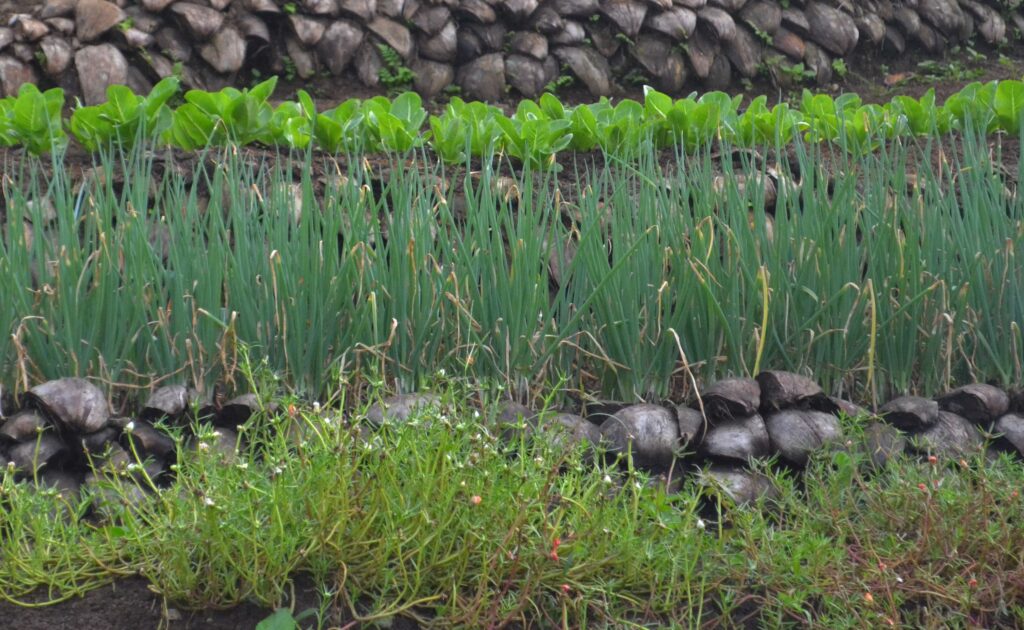Text and Photos by Henrylito D. Tacio
If someone mentions the words “organic agriculture,” what comes into your mind right away?
Environment-friendly, natural, not using pesticides and other chemicals, sustainable, regenerative, and healthy – these are the words used to describe this farming method, which has recently captured the attention of many countries around the world.
Thanks to Republic Act 10068, organic farming is now being promoted in the Philippines. More popularly known as the Organic Agriculture Act of 2010, the law is a state policy that promotes, propagates, and further develops organic farming practices in the country.

In its report, the United Nations Food and Agriculture (FAO), Organic Agriculture and Food Security, believes organic agriculture is one of the methods that can fight hunger and tackle the issues of climate change aside from being beneficial for farmers, consumers, and the environment.
In a recent report, Lucille Elna Parreno-de Guzman gives us further information about organic agriculture: “Organic agriculture is an agricultural production system that avoids or largely excludes the use of synthetically compounded fertilizers, growth regulators, pesticides, livestock feed additives, and genetically modified organisms and products.”
As espoused in RA 10068, the practice of organic agriculture can significantly control the pollution brought about by using chemical inputs like fertilizers and pesticides. By avoiding using them, the soil fertility is greatly improved.
This is why the Bureau of Soil and Water Management, a line agency of the Department of Agriculture, considered organic agriculture as one of the methods that can combat land degradation.

It has been found that organic agriculture does not only help improve soil fertility but also prevent wind and water erosion of the soil, improve water infiltration and retention capacity, reduce surface and groundwater consumption, and subsequent soil salinization and reduce ground and surface water contamination.
In the Philippines, land degradation is a continuing serious problem. Around 11.45 million hectares (about 38% of the country’s total land area of 30 million hectares) is estimated to be degraded. About 2.6 million hectares are considered hot spots as these are cultivated without soil and water conservation measures.
As a result, soil productivity has been reduced by 30% to 50%. The estimated total net primary productive loss from 1981 to 2003 was 4,100,145 tons, which affected 33 million people or about 42.75% of the total population at that time, a report said.
The paper written by Parreno-de Guzman was part of the cross-country research project, “Sustainable Land Management: Adoption and Implementation Constraints,” which was funded by the Economy and Environment Programs for Southeast Asia (EEPSEA) and the Economics of Land Degradation (ELD) Initiative.
According to the author, organic agriculture has been identified as a sustainable land management intervention that can help avoid, reduce or reverse land degradation. It has almost been seven years now since RA 10068 has been signed, but not too many farmers adopt the technology.
What must be the reasons?
To find out, Parreno-de Guzman conducted a study in selected towns in Laguna and in La Trinidad, Benguet, where farmers are adopting organic agriculture. Chemical pollution of soil and water bodies is the mainland degradation issue in the municipalities where the study was done. “This is mainly due to the continuous and indiscriminate use of chemical inputs in farming,” Parreno-de Guzman wrote.
Agricultural savants believe that continued use of chemical fertilizers and pesticides causes organisms present in the soil to die. Without soil organisms, chemically saturated land will eventually lose its capacity to nourish healthy and fruitful crops, until finally, the soil “dies.” With “dead” soil, how can farmers grow crops?
“In Laguna, soil erosion occurs but only at a minimal rate,” Parreno-de Guzman wrote. “Farmers who have converted to organic agriculture did so mainly to observed and experienced negative health effects in using chemical fertilizers and pesticides.”
Despite the benefits derived from organic agriculture, farmers were still not agog about it. The author cited four reasons:

For one, organic agriculture is “knowledge-intensive.” There are so many options available, and it’s up to the farmers to select which suit best to their farms. After training, “constant monitoring and assistance are still needed to ensure farmers’ continuous practice and compliance to organic agriculture standards,” Parreno-de Guzman wrote.
Another reason: too much labor in the production of organic fertilizers and concoctions. Most farmers are used to having quick fixes by simply buying chemical inputs. “Gathering raw materials and preparing these into organic fertilizers and other concoctions is considered laborious and time-consuming,” wrote Parreno-de Guzman.
Vermicomposting – the process of using earthworms to turn organic waste into vermicompost – is the main fertilizer production technology promoted in organic agriculture. But doing so entails high capital as it requires the construction of vermi beds and the use of a shredder to cut the materials for composting. “These expenses are beyond the reach of small farmers,” Parreno-de Guzman wrote.
But the real reason why most farmers won’t adopt the technology is the low production during the conversion period. The low harvest is due to the use of organic fertilizer. “The NPK (nitrogen, phosphorus and potassium) in chemical fertilizers is easily available for plant uptake unlike organic fertilizers which are slow in releasing nutrients,” wrote Parreno-de Guzman.
Aside from those four reasons, the high cost of organic certification has also been cited as a stumbling block. Section 17 of RA 10068 stated: “Only third-party certification is allowed (for agriculture produce) to be labeled as organically produced.”
The researcher considered that statement as a limiting factor in organic agriculture implementation. In addition, the cost of certification – ranging from P42,000 to P150,000 – is also limiting.

